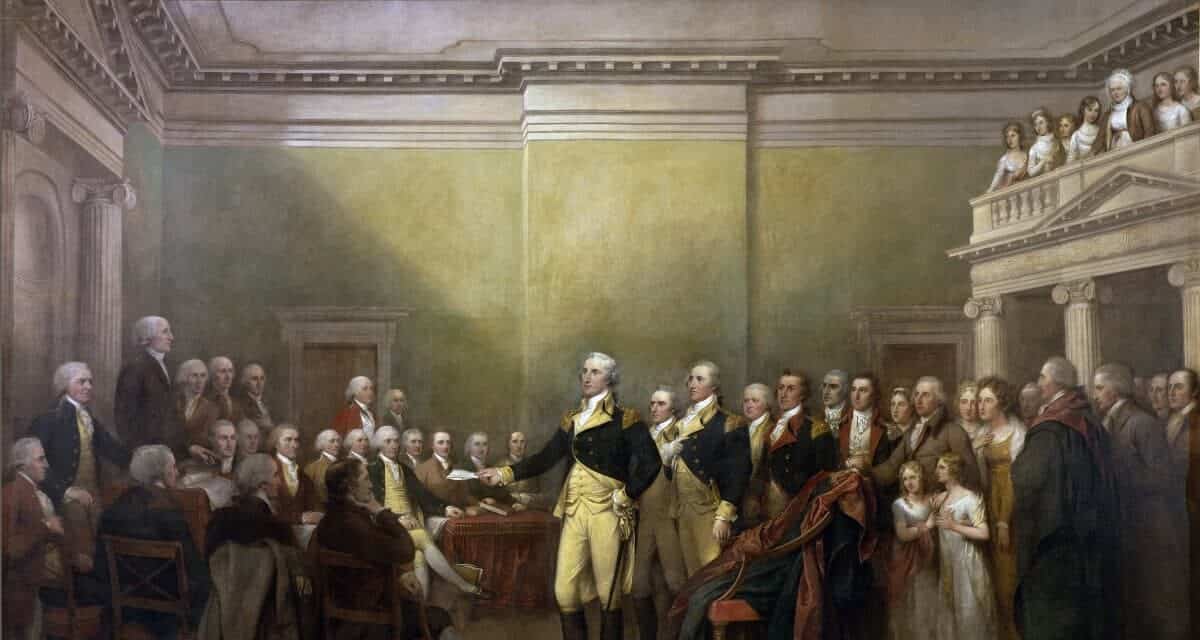In October of 1781, American forces and their French allies trapped and besieged a British army in Yorktown. On October 19th, the British surrendered, bringing to a close the final major battle of the American Revolutionary War. However, it took years between that victory and the actual birth of the United States of America.
Following are ten significant events that took place in the aftermath of the Patriots’ victory at Yorktown.
Thousands of Slaves Who Had Fought For Their Freedom Were Forced to Flee the New United States
One of the greatest contradictions of the American colonists’ quest for liberty was pithily summed up by Samuel Johnson in 1775: “How is it that we hear the loudest yelps for liberty from the drivers of Negros?” Many proponents of liberty and equality amongst the rebels, such as Thomas Jefferson, owned hundreds of other human beings as chattel slaves. Jefferson lived quite well in his mountain estate, Monticello, because hundreds of slaves toiled for his benefit, driven by the lash and the threat of extreme violence, or even death, if they balked.
When the Revolutionary War began in earnest, the British, unsurprisingly, sought to discomfit rebel slave owners by turning their slaves against them. In November of 1775, the British governor of Virginia offered slaves from rebel plantations freedom in exchange for service to the Crown. Thomas Jefferson decried that, and the Declaration of Independence, notwithstanding the “All men are created equal” part, heatedly denounces the British for offering the colonists’ slaves a chance at that equality.
Thousands of slaves ran away, hoping to trade bondage under their American owners for freedom with the British. In South Carolina, for example, 25,000 slaves – a quarter of the colony’s slave population – escaped to British held territory. Many runaways were caught and savagely punished by their masters, then returned to slavery, but those who reached the safety of British lines were free.
The freed slaves worked for the British as laborers, guides, spies, and fighters. Many served with conspicuous courage, sporting sashes that read “Liberty to Negroes” – freedom fighters in the most literal sense of the word. Unsurprisingly, many of the former slaves, having lived through a lifetime of mistreatment and indignities, were quite eager to spill the blood of their former masters when they finally got the chance.

Unfortunately from the black loyalists’ perspective, the side that offered them freedom lost, and their former masters prevailed. As the war wound down, thousands of slaves-turned-freedom-fighters found themselves bottled up with the British in enclaves such as Charleston and New York, unsure whether the Crown would honor its promises to them. They had good reason to worry: American negotiators had added a last minute clause to the 1783 Treaty of Paris, forbidding the British from “carrying away” American property. Said “property” included the runaway slaves who had fought for the British.
After the signing of the treaty that ended the war, the fate of those slaves became a bone of contention between the Patriots and British commanders in the former colonies. By the terms of the treaty, the British were bound to deliver their black comrades in arms to their former masters, but the British on the ground balked. That incensed George Washington, and hostilities threatened to erupt anew over the issue.
The British in New York finally resolved the issue, to the ire of the slave owners, by issuing thousands of “Certificates of Freedom” to black loyalists. The documents entitled their bearers to decamp to British colonies such as Nova Scotia “or wherever else He/She may think proper.” In South Carolina, the British also honored their commitment to the slaves who had fled to their lines. They took them with them when they evacuated the state, and resettled them in the Caribbean and elsewhere.

